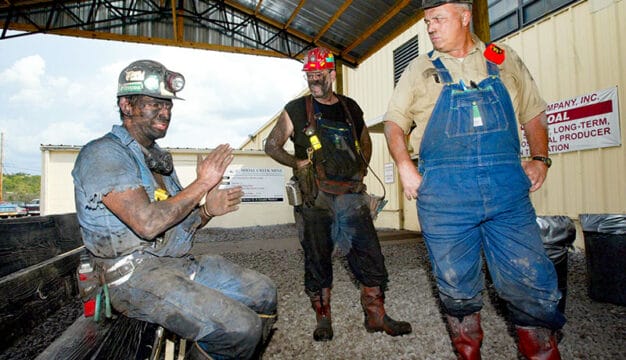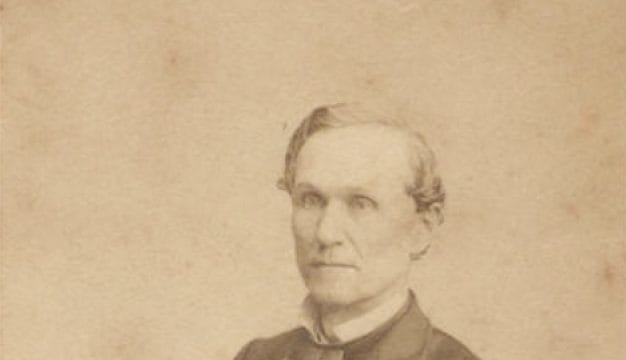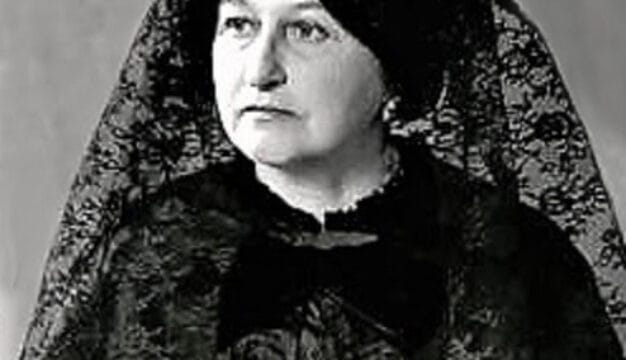Dick Cooper
 Dick Cooper
Charles Richard “Dick” Cooper Jr. (1946- ) has been an important participant in and supporter of the cultural scene in and around Muscle Shoals, Colbert County, for a half century. He contributed to the international recognition of the music and arts in the region as a journalist, editor, photographer, music production assistant, promoter, and music coordinator. Known professionally as Dick Cooper, he worked at several newspapers in northern Alabama, where he also documented political and cultural life in the 1960s during a tumultuous moment in the American civil rights movement. But it was his work as a music journalist and photographer during the 1970s and after chronicling the emergence of the Muscle Shoals “sound” for which he is best known. In addition, he has had a long association with the Alabama Music Hall of Fame (AMHOF), in Tuscumbia, Colbert County, often assisting in archiving and research and promotion.
Dick Cooper
Charles Richard “Dick” Cooper Jr. (1946- ) has been an important participant in and supporter of the cultural scene in and around Muscle Shoals, Colbert County, for a half century. He contributed to the international recognition of the music and arts in the region as a journalist, editor, photographer, music production assistant, promoter, and music coordinator. Known professionally as Dick Cooper, he worked at several newspapers in northern Alabama, where he also documented political and cultural life in the 1960s during a tumultuous moment in the American civil rights movement. But it was his work as a music journalist and photographer during the 1970s and after chronicling the emergence of the Muscle Shoals “sound” for which he is best known. In addition, he has had a long association with the Alabama Music Hall of Fame (AMHOF), in Tuscumbia, Colbert County, often assisting in archiving and research and promotion.
Cooper was born on January 26, 1946, in Birmingham, Jefferson County, to Charles Richard Cooper of Americus, Georgia, and Francis Ruth Aldridge (Cooper) of Birmingham, where he was raised in an environment surrounded by art and politics. He learned the art of photography from his father, who was a professional photographer for the Tennessee Coal, Iron and Railroad Company. Richard Cooper Sr.’s extensive collection of photographs document the growth of Birmingham. Many photos are aerial shots of the city, other photos document Birmingham’s post-war commercial development as well as political events. The younger Cooper, at age seven, was introduced to document restoration expert Q. B. Shenk, and worked in the darkroom of the Graphic Photo Service in Birmingham, where he learned the art of lighting and film exposure. Both experiences would be important in his career as a photographer. He attended Hewitt-Trussville High School, during which time he witnessed, in the streets of Birmingham, the aftermath of the Sixteenth Street Baptist Church bombing in the spring of 1963.
He matriculated to the University of Alabama in 1964 after graduating high school and then transferred to Jefferson State Junior College in 1965, joining the staff of the student-run newspaper. He began reporting for the Birmingham Post-Herald in 1965 at the height of the civil rights movement. In 1967, Cooper subsequently moved on to the Decatur Daily, where he became a general assignment reporter covering the National Aeronautics and Space Administration (NASA) and the “space race” at the Redstone Arsenal in Huntsville, Madison County. In 1968, he covered the presidential campaign of former Alabama governor George Wallace in Scottsboro, Jackson County. Given his familiarity with anti-integration figures Eugene “Bull” Connor and Wallace through his father’s professional circles in Birmingham, Cooper covered the terrible injustices of Jim Crow in ways that were both supportive of the civil rights movement and sensitive to the rhetorical intricacies of Alabama politics. Cooper joined the Alabama Air National Guard in the fall of 1967, was stationed in Alabama, Mississippi, and Texas through 1972, and wrote for the Alabama Air National Guard newsletter briefly.
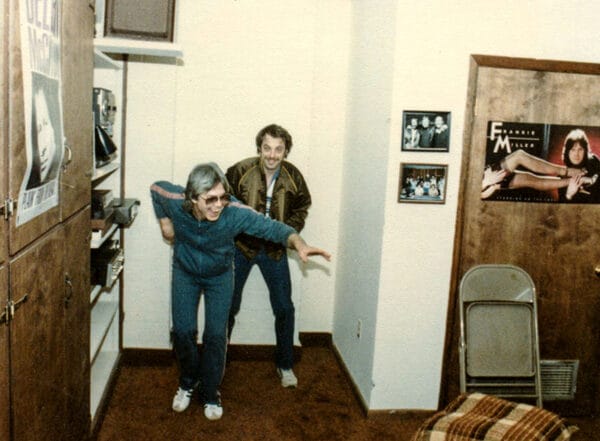 Dick Cooper and Johnny Wyker
In the early 1970s, Cooper relocated to Florence, Lauderdale County, and worked as a newspaper reporter, editor, and photographer for the Florence Times-Tri-Cities Daily, as the Times Daily was then called. As the managing editor, Cooper began writing weekly columns on musical activities in Muscle Shoals recording studios, including Florence Alabama Musical Enterprises (FAME), Muscle Shoals Sound Studio (MSSS), and Widget Studio. He also contributed feature stories on musicians, helping to promote the burgeoning music scene in Muscle Shoals. An early foray into the Muscle Shoals music scene came about when his Decatur friends Johnny Wyker and Court Pickett recorded the unexpected hit “Motorcycle Mama” at Widget Studio in 1970. Also in the 1970s, Cooper photographed recording sessions at Wishbone Studio in Muscle Shoals. Later, Cooper and Wyker created their record label Mighty Field of Vision, concentrating on reissuing recordings by Muscle Shoals guitarist Eddie Hinton.
Dick Cooper and Johnny Wyker
In the early 1970s, Cooper relocated to Florence, Lauderdale County, and worked as a newspaper reporter, editor, and photographer for the Florence Times-Tri-Cities Daily, as the Times Daily was then called. As the managing editor, Cooper began writing weekly columns on musical activities in Muscle Shoals recording studios, including Florence Alabama Musical Enterprises (FAME), Muscle Shoals Sound Studio (MSSS), and Widget Studio. He also contributed feature stories on musicians, helping to promote the burgeoning music scene in Muscle Shoals. An early foray into the Muscle Shoals music scene came about when his Decatur friends Johnny Wyker and Court Pickett recorded the unexpected hit “Motorcycle Mama” at Widget Studio in 1970. Also in the 1970s, Cooper photographed recording sessions at Wishbone Studio in Muscle Shoals. Later, Cooper and Wyker created their record label Mighty Field of Vision, concentrating on reissuing recordings by Muscle Shoals guitarist Eddie Hinton.
Cooper contributed music articles for his Sunday music column through 1974, when he was offered the city editor position at the Times Daily, though by then his focus had become concentrated on music journalism and photography. He declined the offer, recognizing the historical importance of documenting the music culture blossoming there. During his period as managing editor for the Times Daily, Cooper blended his journalistic prowess, photographic skills, and managerial experience, contributing, for example, an article on Mac Davis’s “Baby, Don’t Get Hooked on Me” session at FAME in 1972. In the mid-1970s, Atlantic Records producer Jerry Wexler, who was deeply involved in Muscle Shoals studios, became aware of and impressed with Cooper’s skills as a journalist and helped catalyze Cooper’s role in the Muscle Shoals scene. In fact, it was Wexler who encouraged Cooper to pursue qualification requirements for Mensa International, the “High IQ Society.” And it was in the kitchen of his friend William Bradford Huie, author of The Americanization of Emily, that Cooper snapped a photograph of the author in a moment of candid conversation.
In the 1970s and after, Cooper developed techniques in music photography that are recognized internationally. His philosophy of music photography developed from his recognition that a photograph is a unique combination of light, film speed, and movement of the subject. Musicians, he realized, synchronize their movements according to musical rhythm and thus the camera becomes part of the song, itself. He developed the technique of shooting on the rhythmical downbeat when the action halts for a split second. This technique is crucial in the low-light environment of most music performances, which requires that the shutter speed is slow enough to capture the light. For Cooper, this is the photographer’s art: capturing and documenting performance in clarity of action.
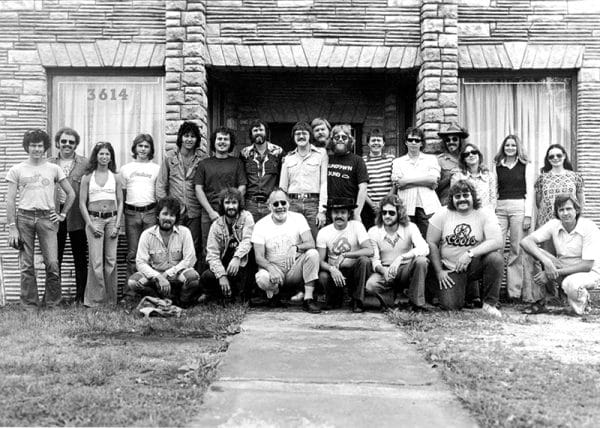 Muscle Shoals Sound Studio
In the fall of 1977, Cooper functioned as the road manager for a Muscle Shoals-area band, comprised of bassist/singer Lenny LeBlanc and Muscle Shoals Rhythm Section (MSRS) guitarist Pete Carr, that was assembled in 1975 by Wexler. The LeBlanc-Carr outfit toured to promote its album Midnight Light as the warm-up act for Lynyrd Skynyrd. The tour, however, was tragically cut short by the October 1977 plane crash in Mississippi that took the lives of several of Skynyrd’s members, including lead singer and founder Ronnie Van Zant. Cooper and LeBlanc-Carr, by chance, were travelling by car.
Muscle Shoals Sound Studio
In the fall of 1977, Cooper functioned as the road manager for a Muscle Shoals-area band, comprised of bassist/singer Lenny LeBlanc and Muscle Shoals Rhythm Section (MSRS) guitarist Pete Carr, that was assembled in 1975 by Wexler. The LeBlanc-Carr outfit toured to promote its album Midnight Light as the warm-up act for Lynyrd Skynyrd. The tour, however, was tragically cut short by the October 1977 plane crash in Mississippi that took the lives of several of Skynyrd’s members, including lead singer and founder Ronnie Van Zant. Cooper and LeBlanc-Carr, by chance, were travelling by car.
The following year, music producer and keyboardist Barry Beckett of the MSRS hired Cooper as production assistant for Beckett Productions. Cooper was tasked with finding songs for artists, visiting publishing houses on Music Row in Nashville, interviewing publishers, and working with artists to evaluate their creative processes and objectives. As production assistant to Beckett Productions, Cooper worked on Hinton’s album Very Extremely Dangerous (1978). Also in that role, Cooper worked with, among others, Joan Baez on Honest Lullaby (1979) and John Prine on Storm Windows (1980).
 Eddie Hinton
Cooper was the original curator at the AMHOF, which opened in 1986, and he has acted as assistant director. Much of his work there has been in the restoration of artifacts, thus bringing Cooper’s work full circle to his early work in document restoration. He has worked on the boards of the Muscle Shoals Music Association, the W. C. Handy Festival, the Muscle Shoals Music Foundation, and the Southern Music Foundation. He is a current board member of the Alabama Folklife Association. His career as a photographer boasts a collection of more than 15,000 photographs, many of which have been exhibited at the AMHOF and at the Tennessee Valley Arts Center. As a journalist and music producer Cooper worked on the Drive-by Trauckers‘ Southern Rock Opera recording in 2000. He also contributed photography for the 2017 release of Bob Dylan’s Trouble No More: The Bootleg Series, Vol. 13/1979-1981.
Eddie Hinton
Cooper was the original curator at the AMHOF, which opened in 1986, and he has acted as assistant director. Much of his work there has been in the restoration of artifacts, thus bringing Cooper’s work full circle to his early work in document restoration. He has worked on the boards of the Muscle Shoals Music Association, the W. C. Handy Festival, the Muscle Shoals Music Foundation, and the Southern Music Foundation. He is a current board member of the Alabama Folklife Association. His career as a photographer boasts a collection of more than 15,000 photographs, many of which have been exhibited at the AMHOF and at the Tennessee Valley Arts Center. As a journalist and music producer Cooper worked on the Drive-by Trauckers‘ Southern Rock Opera recording in 2000. He also contributed photography for the 2017 release of Bob Dylan’s Trouble No More: The Bootleg Series, Vol. 13/1979-1981.
Cooper is married to Becky Greenhill Cooper and has children from a previous marriage.

